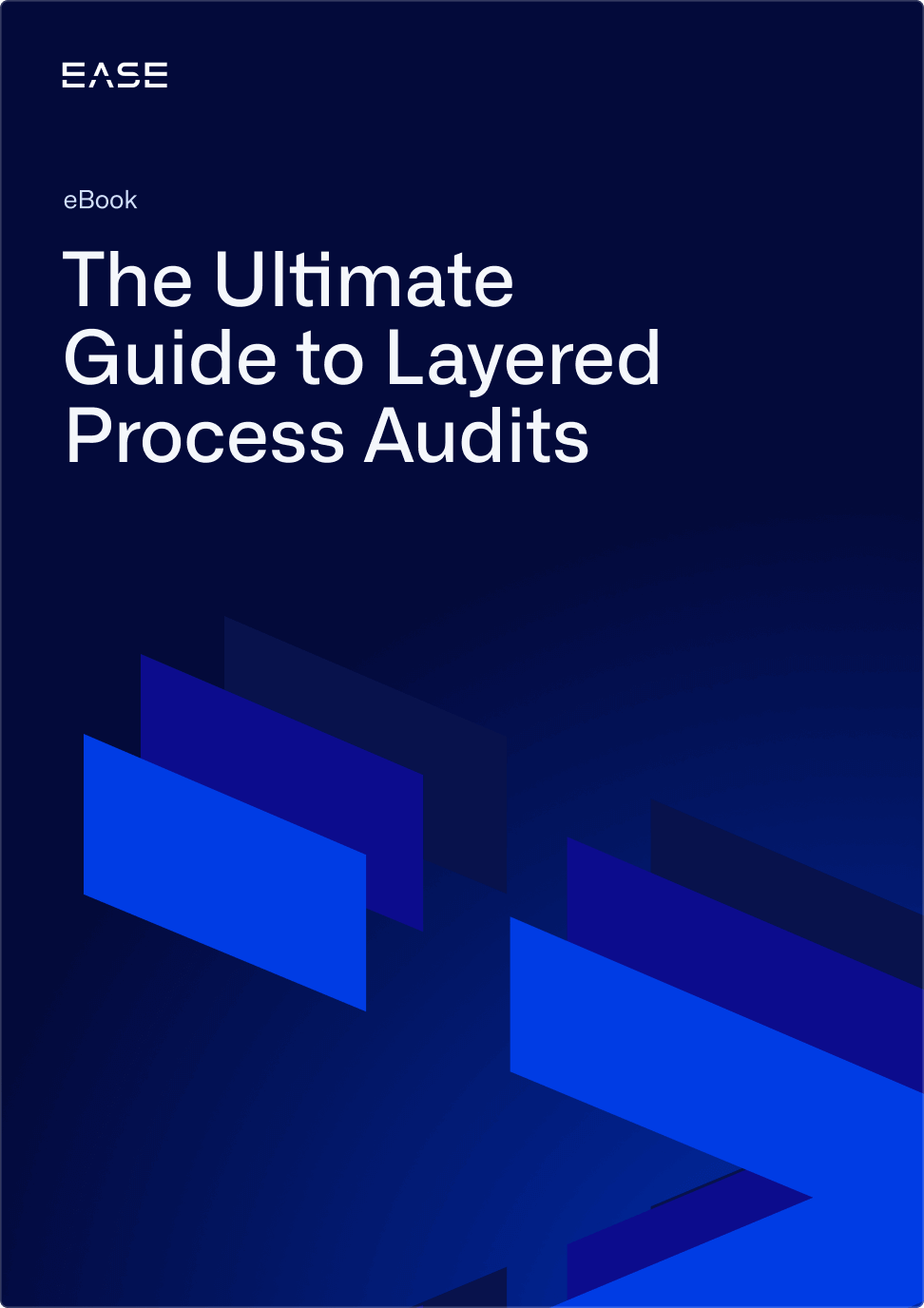Layered Process Audit Guideline: 6 Steps to Implement LPA

If you could reduce defects by half in just a few months, what would that mean for your company?
It’s possible with a layered process audit (LPA) program, but the complexity involved with these audits means many companies don’t leverage their full potential. With LPAs, every layer of management participates in daily checks of high-risk processes. It’s a tall order for many organizations, requiring a solid plan and a prepared team.
Read our layered process audit checklist
To build an effective LPA system, manufacturers should focus on the plan-do-check-act approach:
- Plan: The first steps include learning about LPAs, creating your team, writing questions and determining audit layers.
- Do: Rolling out your LPA program requires disciplined scheduling, as well as a closed-loop system to manage findings.
- Check: Data analysis is key to assessing performance and leveraging results for further gains.
- Act: Continuous improvement means ongoing engagement and updates to questions.
Get A Free Download of Ease LPA Guide
1. Master Layered Process Audit Best Practices
Managers and process owners need a firm grasp of the LPA process before building teams and training participants. A good place to start is the Automotive Industry Action Group’s CQI-8 Layered Process Audits Guideline, which provides detailed information on:
- How to explain LPAs toyour team
- Types of checklist questions to include, and what to avoid
- Best practices for monitoring, measuring and maintaining your LPA program
2. Build A Solid LPA Team
Your audit management team is responsible for creating checklists and implementing the system across the plant. Experts recommend creating your team with employees from all areas of the organization, including administration, sales, quality and order fulfilment.
Whether or not you can realistically include such a broad cross-section of the company, the point is this: you shouldn’t only include experts. Fresh eyes often notice what other people have missed, and rotating auditors also protect data integrity by discouraging buddy-passing.
3. List Your Audit Questions
Each LPA should contain just 3 to 10 questions and take less than 15 minutes to complete. It sounds simple, but getting useful answers means asking the right questions in the first place. That starts with looking at previous quality control problems and high-risk processes, such as those identified in failure modes and effects analysis (PFMEA) reports.
To craft strong audit questions, make sure they are:
- Objective: Questions need a clear answer, which is why most LPA questions are yes or no.
- Specific: Avoid vague phrases like “proper,” and instead provide clear specifications, tolerances, or criteria for verification.
- Concise: Don’t get bogged down in technical details. People unfamiliar with the process should be able to understand and answer the question.
4. Plan Your Audit Program
Layered process audits get their name from the multiple layers of personnel who conduct the audits. To create the audit plan, your team must define the layers as well as the frequency for each layer.
A typical LPA program includes 3 layers:
- Layer 1 includes supervisors and team leads conducting audits daily across every shift.
- Layer 2 includes middle management conducting audits once or twice weekly.
- Layer 3 includes plant managers conducting audits monthly, as well as executives conducting audits quarterly or annually.
5. Roll Out Your LPA Program
Once you’ve completed the planning process, it’s time to execute your plans. Essential elements of a strong rollout include:
- Efficient scheduling and follow-up: LPA programs can require thousands of audits annually. Automated LPA software reduces the resulting administrative burden by as much as 85%, allowing you to assign audits and set up auto-notifications in minutes.
- Communication: Also critical to implementation is communicating the benefits and expectations around the LPA program. Emphasize that LPAs aren’t about blame—the goal is working together to identify problems and create higher-quality, leaner operations.
- Corrective action: Unless you have a closed-loop process in place to manage non-conformances, the rest of your LPA efforts are pointless. You should be able to quickly close out smaller non-conformances and assign corrective actions on the spot.
6. Measure and Improve Your LPAs
The final step in implementing an LPA program is analyzing your data and taking action based on your findings. Focus on steps such as:
- Reviewing audit data while it’s still actionable instead of weeks or months later (which is often the case with paper checklists and spreadsheet-based tracking).
- Updating questions when processes or requirements change, as well as verifying that corrective actions are working.
- Measuring the LPA program itself to develop leading metrics such as audit completion rates and time to closure for corrective actions.
Implementing an LPA program can be challenging, but it also comes with significant rewards that include reduced quality costs and a more robust quality culture. Automated tools make the process simpler, eliminating hours of scheduling and data aggregation while providing a closed-loop process that ensures adherence to standards.
